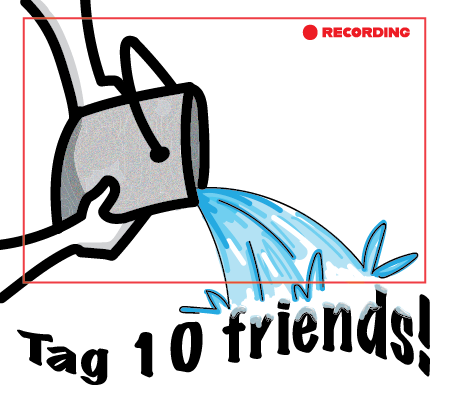Graphic by Lillie Busch
When checking your phone during class, you see that someone tagged you in a post, along with eleven other people. Maybe it is finally those photos from the previous weekend, or maybe it is a funny meme. Instead, it is a video filmed by a shaky hand.
Beyond the camera frame, someone drops a bucket of ice onto your friend—really, an acquaintance, but Facebook makes everyone your friend. You then reward your friend with a small smile, pause the video and continue scrolling through your newsfeed.
The video is left unwatched, and your part in the challenge is left unfulfilled. In the future, you may possibly recognize the acronym for the illness.
The ALS ice bucket challenge. The DIPG lemon face challenge. The online trends together earned the term “slacktivism”: the idea that interacting with posts and other social media is pseudo-activism due to the lack of commitment and effort. In the real world, slacktivism can be as simple—and that’s the point!—as wearing a button to support a specific cause.
Slacktivism goes hand-in-hand with viral internet challenges. Such social media trends raise awareness on important issues, but how engaging are the videos, truly?
While likes, shares and hashtags may raise awareness for a specific cause, rarely does simply clicking a button lead to larger acts of service, such as attending a protest.
According to a British Columbia study by researchers Kirk Kristofferson, Katherine White and John Peloza “The Nature of Slacktivism,” acts inspired by social media do not always inspire more volunteering with an organization. On the other hand, service acts (e.g., running a 5K) lead to bigger acts in the future (e.g., donating money towards a cause.)
A different study, performed by researchers at Michigan State University, theorizes that slacktivism usually leads to other passive acts, such as signing a petition. They do not always inspire active acts, such as volunteering or protesting.
This article is not trying to say that the videos and challenges are completely ineffective; they do garner attention and donations. After all, according to a 2016 New York Times article, research for ALS received $115 million in donations, due in part to the ice bucket challenge.
Needless to say, that is not a sum of money to easily dismiss.
But challenges are not permanent (Is anyone still doing the ice bucket challenge?) and donations are not physical actions like volunteering. Posting a video does not make you an activist. Rather, it continues the façade that social media encourages us to endorse.
When uploading a video, tagging friends is seen more as showing off rather than raising awareness. Slacktivism may spark conversation, but that does not always lead to action.
Popular hashtags like #BringBackOurGirls may spread awareness, but they do not produce results. #BlackLivesMatter was quickly copied by #BlueLivesMatter and #AllLivesMatter in an attempt to diminish the original movement.
Online, we are all performing for one another. What you do off-screen, when no one is watching, that is what really matters.

























